Gran Celebración de Jeongwol Daeboreum (정월대보름 한마당)
484.7484724624857m 5807 2024-01-26
Samcheong-ro 37, Jongno-gu, Seúl
02-3704-3114
El Museo Folclórico Nacional de Corea celebra la festividad de la luna llena, conocida como Jeongwol Daeboreum. Se realizan muchos eventos tradicionales para desear buena suerte en el nuevo año.
Boan1942 (보안1942)
485.9628048690862m 0 2023-12-21
Hyoja-ro 33, Jongno-gu, Seúl
Antes de convertirse en un espacio de arte en 2007, Tongui-dong Boan sirvió como lugar de descanso para los viajeros desde 1942 hasta 2005. Después de una breve pausa, el lugar se renovó como espacio cultural en 2017 para continuar con su legado histórico y brindar creatividad e inspiración bajo el concepto de "Boanstay".
Boan1942 se divide en un espacio cultural (que consta de una cafetería, un taller de proyectos, una librería y un área de exposiciones), y Boanstay (en los pisos 3 y 4, ofreciendo alojamiento temporal a los nómadas culturales). Ubicado en Seochon, el centro de la cultura, la historia y el tráfico de Seúl, Boanstay ofrece una espléndida vista de los patrimonios históricos y culturales de Seúl, como el palacio Gyeongbokgung, Cheong Wa Dae y la Aldea Tradicional Seochon.
* Cortesía de Boanstay.
Museo Folclórico Nacional y Museo Infantil del Museo Folclórico Nacional (국립민속박물관&국립민속박물관 어린이박물관)
507.4328357000545m 0 2024-04-18
Samcheong-ro 37, Jongno-gu, Seúl
Hanok Guesthouse Dongchonchae [Korea Quality] / 한옥 게스트하우스 동촌재 [한국관광 품질인증/Korea Quality]
515.7635116916107m 2 2021-03-26
21-10, Jahamun-ro 11-gil, Jongno-gu, Seoul
Built in 1939, Dongchonchae was designated as Seoul Well Hanok by the Seoul Metropolitan City in 2016. In 2020, this hanok (traditional Korean house) received the Certificate of KOREA QUALITY from the Korea Tourism Organization in the Heritage Hanok field in recognition of its historicity and quality of services. Dongchonjae is located in the western side of Gyeongbokgung Palace, at Seochon. When one passes through its main gate, one sees the yard, with anchae (women's quarters), sarangchae (men's quarters), and byeolchae (detached quarters) surrounding the plot. Anchae has four rooms, daecheong (wood-floored main hall), a kitchen, and a restroom. One of the rooms is used for tea ceremonies as well. Outside of the sarangchae and byeolchae, which are the living spaces for the owners, visitors have free access to the numaru (raised open floor) and the yard. The anchae’s rooms “Bom” and “Yeoreum” can accommodate 2 to 3 adults each, while the rooms “Gaeul” (Tea Room) and “Gyeoul” are optimal for two. The building is rented out as a whole, so no more than one group may stay in the building at any given time. Standard occupancy is four persons, and eight is the maximum number. There are two restrooms, one within the anchae building, one out in the backyard.
Cooking is not allowed in the kitchen, but guests are free to bring in outside food. Experience programs on offer include nighttime exploration of Seoul City Wall, tea ceremony, folk songs, and rice cake making. Additional payment is only required for rice cake making. Guests may choose between two types of complimentary breakfast: Korean, which comes with rice, soup, and three side dishes; and Western, which comes with bread, salad, and coffee. There are a 100-in screen and mini projector for film watching in the yard or daecheong. Towels, toiletries, hair dryer, bottled water, traditional tea, and capsule coffee are included. The kitchen is equipped with kitchen utensils, a microwave, and a coffee pot, enough for instant foods. Guests also have access to refrigerator and washing machine
Podam (포담)
542.4280986243057m 150 2021-03-22
11, Jahamun-ro, 9-gil, Jongno-gu, Seoul
+82-2-733-0831
A store featured in Korean gourmet programs. This Chinese (cuisine) restaurant is located in Jongno-gu, Seoul. The most famous menu is dim sum.
Hojil (호질)
553.5955125457199m 165 2021-03-20
15, Jahamun-ro, 9-gil, Jongno-gu, Seoul
+82-2-764-6822
A good restaurant to visit before and after the tour, being located near Gyeongbokgung Palace, one of the tourist attractions. This restaurant's signature menu is spicy sea snail salad. This Korean dishes restaurant is located in Jongno-gu, Seoul.
Jihwaja (지화자)
555.6565215282008m 39855 2021-01-08
125, Jahamun-ro, Jongno-gu, Seoul
+82-2-2269-5834
Operated by a “Living Treasure Of Korean Royal Cuisine” since 1991, Jihwaja is a high-class traditional Korean restaurant located in the center of downtown Seoul. It has enjoyed a high reputation as the finest restaurant that preserves “The Legitimacy of Korean Royal Cuisine,” the essence of the Korean food culture. Jihwaja resembles the sophisticated ambiance of the neighborhood that captures the beauty of the Joseon dynasty. The restaurant offers very healthy and nutritious dishes as they are prepared with only natural ingredients and royal culinary techniques, without using any MSG, artificial flavors or additives. Jihwaja offers a dining experience like no other through a meal fit for kings and queens and food storytelling.
Jihwaja is committed to promote Korea's authentic traditional food culture - Korean Royal Cuisine - across the world for generations.
Seochon Guest House [Korea Quality] / 서촌 게스트하우스 [한국관광 품질인증]
566.4109972773459m 5504 2023-04-07
28-3, Jahamun-ro 7-gil, Jongno-gu, Seoul
+82-010-3345-9680
Seochon Guest House is located in Seochon, which is becoming a hot place for tourists in Seoul, and precisely on the road to Suseong Valley, whichis filled with interesting stores and is also well-known for Park Nosoo Art Gallery and the House of Yun Dong-ju (poet). Seochon Guest House is nicknamed ‘Jaeminangol (interesting village)’ after Baekseok’s poem ‘Yeowunangol’, with the aim of providing a visit full of interesting experiences. Passing through a garden and entering the main building, the unique charm of this hanok building, the staircase to get to the first floor from daecheong (main floored room), catches the eye of the visitors. In addition, the building is decorated with various stylish objects including paintings and Korean musical instruments. The terrace situated on the first floor offers an open view of the surrounding area including roof tiles of hanok structures and alleyways in Seochon. It is said that Korean novelist Yoon Hu-myeong also appreciated the structure of the guesthouse, saying, “It is an interesting place.” Built in the 1930s, the house, which has many storage places, was taken by the owner couple in spring 2014 as they were attracted by the house during their trip to Seochon. After the repair work, the ground floor of the house was opened for guests from January 2016, hoping that guests could share their daily experiences and stories with each other. The guestrooms and the main floored room on the ground floor are open to guests, with the exception of the first floor, which is used by the owner couple. The living room is equipped with books, a curved TV, and a table. The tasty meal, which is served in the kitchen, consists of rice and soup with six side dishes and is much loved by guests. The guesthouse offers a total of four rooms – Jae Room, which is the most Korean-style room; Mi Room, which has a combined style of a Korean-style room and Western-style room; Nan Room, which is an ideal room for meditation with a beautiful paper window; and Ahn Room, which is equipped with a veranda and a pretty flowerbed. Every room has its separate charm with various comfortable bedding to provide a quiet and cozy bedroom for guests in the middle of the city. Furthermore, the guesthouse holds a pansori (epic chant) performance twice a year. The owner started learning how to sing pansori to promote the Korean culture and tradition to foreigners. When a pansori performance is held, the owner offers traditional Korean snacks and drinks including sikhye (sweet rice punch), sujeonggwa (cinnamon punch), traditional sweets and cookies, and tteok (rice cakes) to visitors, tourists, and performers. Moreover, it provides cultural programs such as a Gukak (Korean classical music) experience, Korean traditional clothes experience, and making Korean food experience, as well as other activities with guests, such as trip to the city wall between Inwangsan Mountain and Bugaksan Mountain, and the Royal Palace Tour to Gyeongbokgung Palace, etc., as well as a trip to a traditional market.
Tour bajo la Luz de las Estrellas del Palacio Gyeongbokgung (경복궁 별빛야행)
591.7838799731198m 0 2023-09-13
Sajik-ro 161, Jongno-gu, Seúl
1522-2295
Palacio Gyeongbokgung (경복궁)
597.115786765699m 104198 2024-05-17
Sajik-ro 161, Jongno-gu, Seúl
Gyeongbokgung fue el palacio principal durante la dinastía Joseon (1392-1910). Es uno de los cinco palacios de Seúl y ostenta 600 años de historia. Fue edificado en 1395 por el monarca que fundó la dinastía Joseon, Lee Seong-Gye, cuando trasladó la sede de la capital de la era Goryeo hasta Seúl. Al estar situado en la parte norte de Seúl, solía ser llamado también como “Palacio del Norte”.
El palacio Gyeongbokgung tiene 501.676 metros cuadrados de superficie, dispuestos en forma de rectángulo. En el lado sur se halla la entrada principal, Gwanghwamun. Al norte, Sinmumun; al este, Yeongchumun; y al oeste, Geonchunmun. Dentro del palacio se encuentran pabellones como Geunjeongjeon, Gyotaejeon, Jagyeongjeon, Gyeonghoeru y Hyangwonjeong.
Geunjeongjeon, la sala principal, era el lugar en donde se realizaban las ceremonias oficiales y los funcionarios rendían los informes matutinos ante el rey. Frente al patio interno, se encuentran trazados tres senderos de granito. El del medio, levemente más elevado, era el trayecto por donde caminaba el monarca y los de los lados eran para su Corte. En el patio se levantan a cada lado los pumgyeseok (estelas de piedra con los cargos de los funcionarios públicos).
Jagyeongjeon y Gyotaejeon eran las residencias de la madre del rey y la reina, respectivamente. Jagyeongjeon es famoso por su muro con flores y por su sipjangsaeng-gulttuk (bajorrelieve de la chimenea). La gulttuk tiene el reconocimiento de ser una de las chimeneas más bellas construidas durante el período Joseon y se encuentra en la lista de los Tesoros Nacionales.
Gyotaejeon eran los aposentos de la reina, y el muro y la entrada posterior, que dan al monte Amisan, son particularmente atractivos a la vista. Además de esto, lo que acentúa aún más la elegancia del palacio Gyeongbokgung son sus estanques de flores de loto, Gyeonghoeru y Hyangwonjeoung.
Gyeonghoeru era el lugar en donde se reunían los dignatarios extranjeros y en donde se celebraban fiestas especiales cuando ocurrían buenos acontecimientos en la nación.
Hyangwonjeong es un espacio dentro del patio posterior, que se halla detrás de los aposentos. Al igual que Gyeonghoeru tiene un estanque de flores de loto; pero a diferencia del mismo, posee características distintivamente femeninas. Su arquitectura aprovecha muy bien la geografía de los alrededores del monte Amisan y toda el área se funde en una gran belleza, un ejemplo perfecto de la estructura tradicional de los palacios coreanos.
Asimismo, dentro de Gyeongbokgung hay una biblioteca, Sujeongjeon, en donde los funcionarios tenían largas horas de lectura y el Sajeongjeon, la oficina de trabajo del rey. Además, hay numerosas reliquias históricas designadas como patrimonios culturales. Muchas de ellas fueron traídas desde todos los lugares de la nación, y se pueden mencionar, como ejemplo, la torre de piedra de 10 pisos del templo Gyeongcheonsa, la torre Jigwangguksa-Hyeonmo del templo Beomcheonsa, el reloj Cheonsang de Borugak y el reloj de agua de Heumgyeonggak, entre otras.
En 1910, cuando se firmó el Tratado de Corea y Japón, los japoneses, tras ocupar la península, tiraron abajo todos los pabellones del área sur y levantaron allí su Gobernación. El edificio japonés fue desmantelado a fines del siglo XX y el palacio sigue en proceso de restauración.
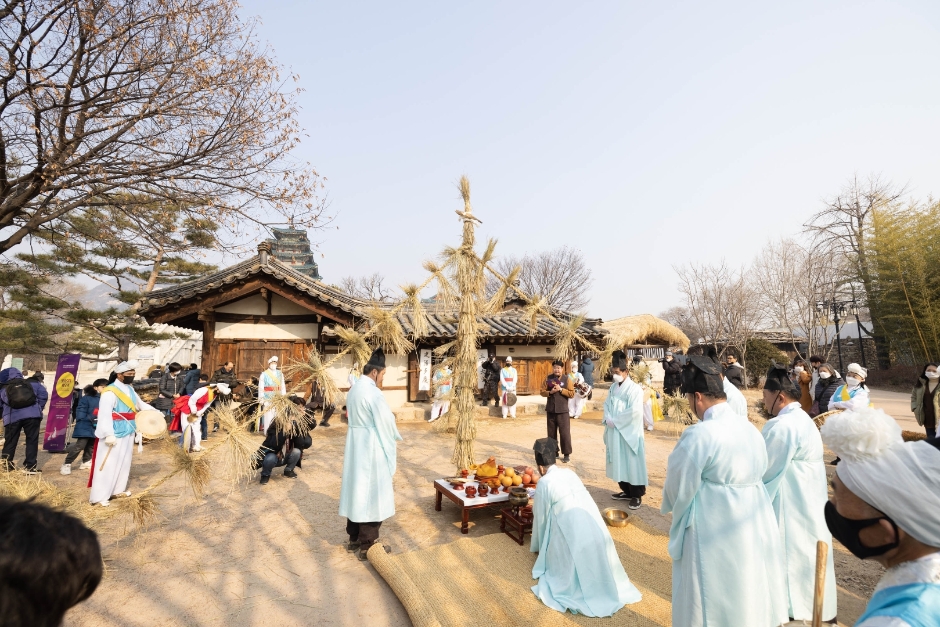

![Hanok Guesthouse Dongchonchae [Korea Quality] / 한옥 게스트하우스 동촌재 [한국관광 품질인증/Korea Quality]](http://tong.visitkorea.or.kr/cms/resource/96/2705896_image2_1.jpg)
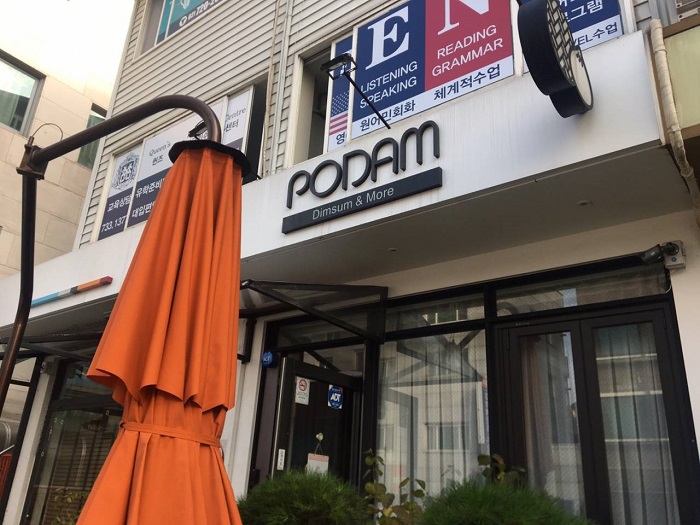
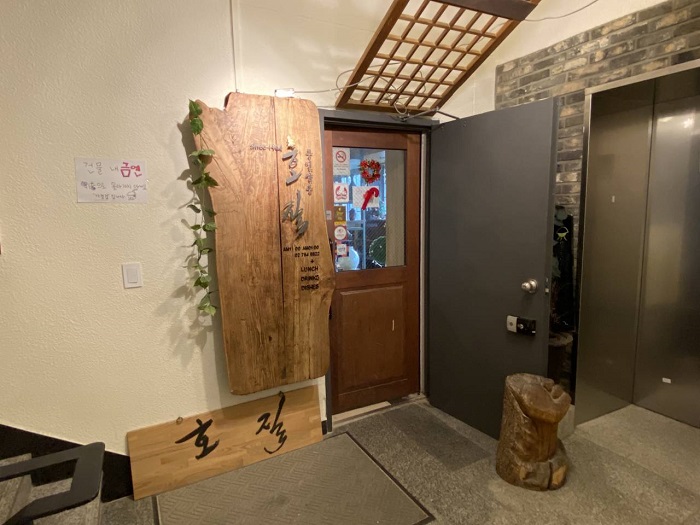
![Seochon Guest House [Korea Quality] / 서촌 게스트하우스 [한국관광 품질인증]](http://tong.visitkorea.or.kr/cms/resource/41/2447241_image2_1.jpg)
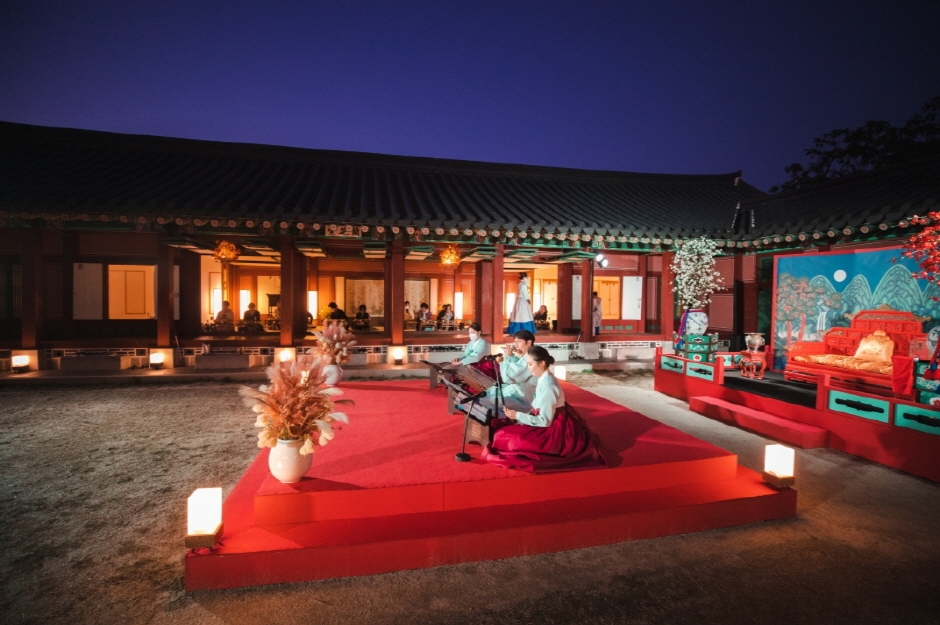
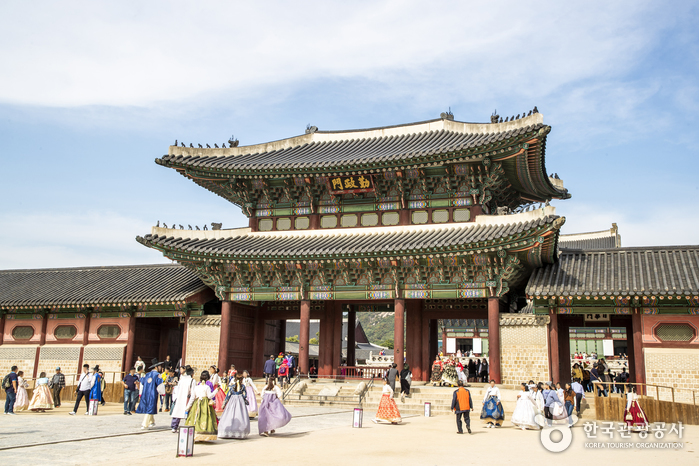
 Español
Español
 한국어
한국어 English
English 日本語
日本語 中文(简体)
中文(简体) Deutsch
Deutsch Français
Français Русский
Русский